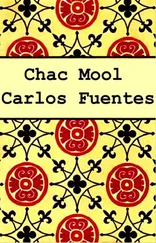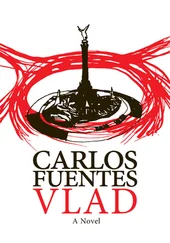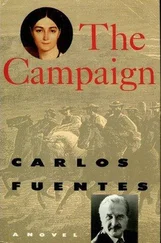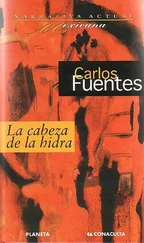I said I didn’t, trying to penetrate the delirium of his discourse but insistent on humoring my enemy.
“They’re mute. The tongues have been tied so they don’t ring.”
“Forever?” I wanted to follow his thread, as if he were a child, a madman.
“No. They’ll ring again when we take power.”
“We? Are there a lot?” I said with a wooden face, à la Buster Keaton, attempting serene impartiality in the face of my friend’s intense, increasingly heated polemic.
“Yes,” Jericó said feverishly. “A lot. A great many. And you? Can I count on you?” he said with passion.
“What about me, buddy?”
“With us or against us?”
“I told the president,” Sanginés confided to me at lunch at the Bellinghausen, “that an ounce of prevention is worth a pound of cure.”
“Let’s see, Toño, who can do more, Monroy or me,” the president said as if he were boasting.
“Don’t be so sure the enemy’s only outside the house.”
“So there’s an enemy on the inside?” Carrera raised his eyebrows. “My good licenciado, you are so suspicious. Don’t torture yourself.”
“Yes.” I looked straight at him. “But that’s not the problem.”
“What can be worse?” Carrera seemed unconcerned, as he did in the good times.
“The enemy outside. The discontent to which Monroy referred, Mr. President.”
“Aren’t the fiestas enough to distract them?” Carrera asked, falling back into frivolity.
“The fiestas are turning into something else entirely.”
“Into what, Sanginés? Don’t be so mysterious.”
“Into brigades. Into shock troops. Into threats to the established order.”
“And what about Jericó?”
“He organized them.”
“Jericó? Where? How?”
“From here, my amiable Don Valentín Pedro Carrera. From this office. Right under your nose.”
“Who told you that?”
“ Cherchez la femme. ”
“Don’t hand me that French shit.”
“Monroy came with his adviser, Asunta Jordán.”
“A good-looking broad.” Carrera licked his lips. “Raise her salary.”
“She doesn’t work for you.”
“Ah! Still, a good-looking broad.”
“I’ve brought you the answer.”
“Whose answer?”
“Your answer, Mr. President. Your answer to Max Monroy and Asunta Jordán. A young woman, with fresh ideas, a graduate of the Sorbonne.”
“Oh, those Frenchies. Oh là là! ”
“We need help. The enemy has come in. Don’t stay alone in the house with the viper. Because you can be very stubborn, but you should fear vipers.”
Sanginés walked to the door. He opened it. A young woman came in, serious but amiable, elegant, beautiful, and with a gleam of power in her eyes, the swing of her hair, the severity of her tailored suit, the elegance of her shoes, and the flash of her legs.
“Mr. President, let me introduce your new assistant, Señorita María del Rosario Galván.”
“Ahnshantay, Mamwahzel.” Carrera bent to kiss her hand while still looking at her.
So I knew now what Sanginés knew about Jericó. And I resisted believing it, above all because I believed in the friendship that had joined my friend and me since we were in school.
THE CENTER OF Mexico City is like the country itself: A surface serves only to hide the previous one, which hides the one that follows. If the country is structured in ascending levels from the tropical coasts to the temperate zones to the high valleys and an unequal distribution of deserts, plains, and mountains, the city masks a vertical cut that carries it from the capricious modernities of our time to a copy of the boulevards and mansard roofs we inherited from the Empress Carlotta of Belgium, “Carlotita” to her intimate friends, and from a flagrant colonial baroque to a Spanish city constructed on the ruins of the Aztec metropolis, Tenochtitlán. Mexico City, as if wanting to protect a mystery everyone knows, disguises itself in many ways: its cantinas, cabarets, brothels, parks, avenues, its luxury restaurants, popular eateries, churches, its mansions protected by high walls and electrified barbed wire, vast shantytowns and one-story hovels with flat roofs, its paint shops, grocery stores, car repair shops, its mothers wrapped in rebozos with a baby in their arms, child beggars, lottery ticket sellers, its armada of parrot-colored taxis, black armored vans, supply trucks carrying rods, bricks, bags of cement, roofs, and gratings for a capital in perpetual construction and reconstruction, the city forever unfinished, as if in this lack of a conclusion resided the virtue of permanence… Mexico City like a vast lunch box where the first dish is always the last. “Dry soup” or stew, wet soup, chicken mole , sweet potatoes…
And so I walked, ruminating and enumerating with a chaos that reflected the chaos of the city, looking for the streets Jericó had mentioned with mysterious emphasis during our encounter on the terrace of the Hotel Majestic. It was dark then, and lights beautified the empty space. Now it is noon, and I don’t want the Historic Center to disguise itself anymore. I want to recognize the Calles de Correo Mayor, Academia, Jesús María, Corona, la Santísima and its bell tower that resembles a patriotic tiara, the Plaza de Santo Domingo and its temple sinking into the placenta of the old Indian lagoon, perhaps nostalgic for its canoes and canals and causeways that have disappeared forever: Mexico City is its own unburied, irrevocable phantom.
There were noble façades of tezontle and marble, large street doors of carved wood, jalousied windows, courtyards filled with flowers: I could see nothing. Sidewalk commerce hid street after street, twenty thousand vendors offered me radios, clothing, costume jewelry, even a television set was suddenly placed in front of my nose so I could see myself reflected in its silvery-gray surface: I thought, seeing my face both surprised and distant, that what the twenty thousand peddlers were selling here, the merchants guided by the long nose of the god that precedes them with a sheaf of staves and dollars, were all versions of my own life, of the faces I could have had, of the bodies that might have been mine, of the odors that might have emanated from my mouth, my armpits, my buttocks, my feet, and now were confused, were part of and emanations from the crowd that pushed me, offered me things, brushed me with charm, touched me with vulgarity, pushed and pulled me where? what was I looking for? the gang evoked by Jericó? could my less and less old friend-more and more my new nemesis-really believe he could mobilize this entire Hugoesque world of mischievous crime, survival by a wink, fierce independence when faced with the powers mocked here, subjected here to the simple law of survival? Could Jericó transform them into an army formulated to take power? Could Sanginés be right? Was I wandering here to confirm the truth? To find out whether Jericó was right or not, whether he believed he could control this hissing serpent slipping from street to street, market to market, favor to favor?
The thousand-headed hydra of Mexico City. In any event, if not a hydra an octopus, and Jericó believed the octopus had only one eye. It’s enough to see it, knowing it isn’t Medusa and can’t petrify us with a glance, because the octopus isn’t concerned with looking. It wants embraces. It has tentacles.
As if searching for respite, I walked through the crowd confirming that México D.F. has twenty-two million inhabitants, more than all of Central America, more than the Republic of Chile, along whose street I walked now toward the temple of Santo Domingo, protected by the Dominican priest Father Julián Pablo from postponable disasters and sometimes from ones that couldn’t be postponed. I saved myself from the fake bullfighters who zigzagged with merchandise in their hands like assault weapons, and in Santo Domingo I encountered the resurrected profession of “evangelists,” men and women sitting on low wooden chairs in front of old Remington typewriters, listening to the dictation of illiterate men and women who wanted to send to a distant village, to families in the countryside, the mountains, the provinces, their regrets, their words of love and sometimes of hate, which these clerks set down on paper and charge for; double if, as safety advises, the “evangelists” themselves are the ones who address the envelope and buy the stamp, promising to drop the letter in the mail.
Читать дальше












